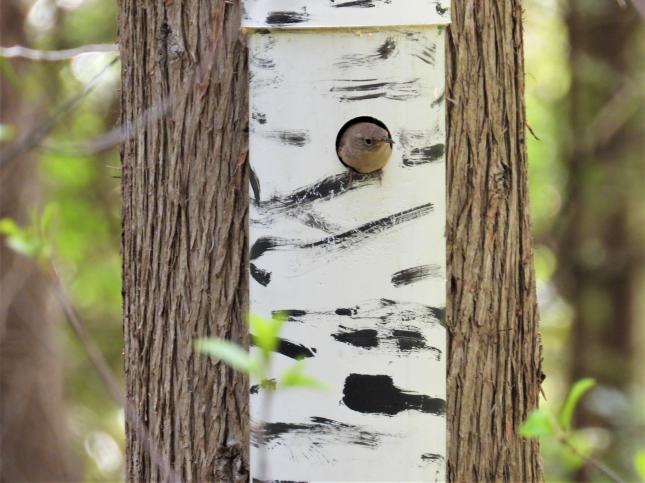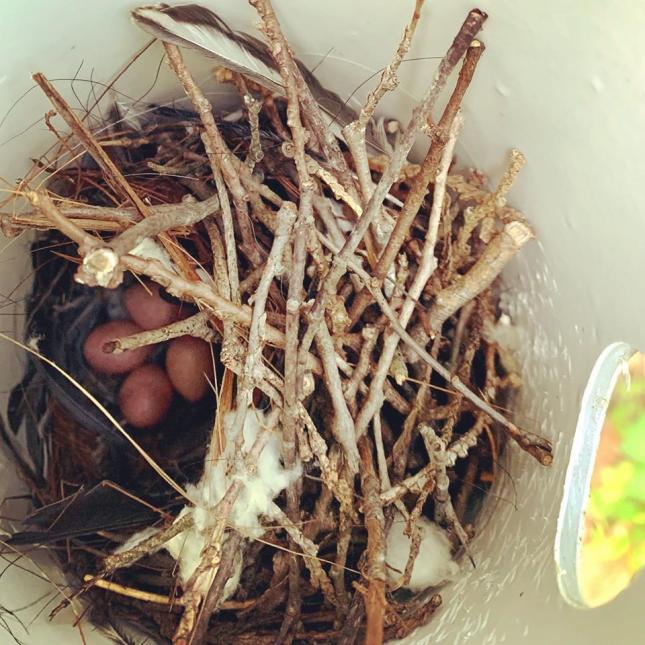Build your own Nesting Boxes for your backyard birds!
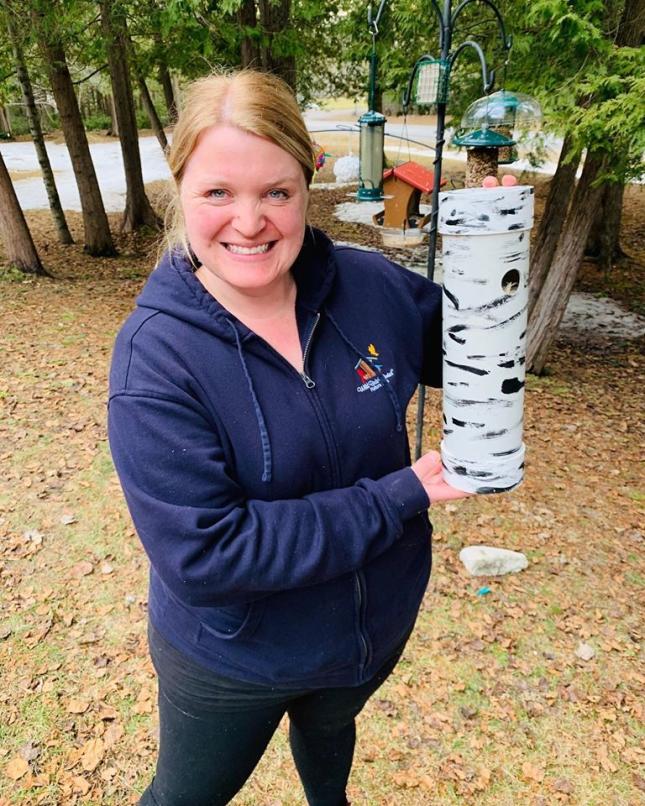
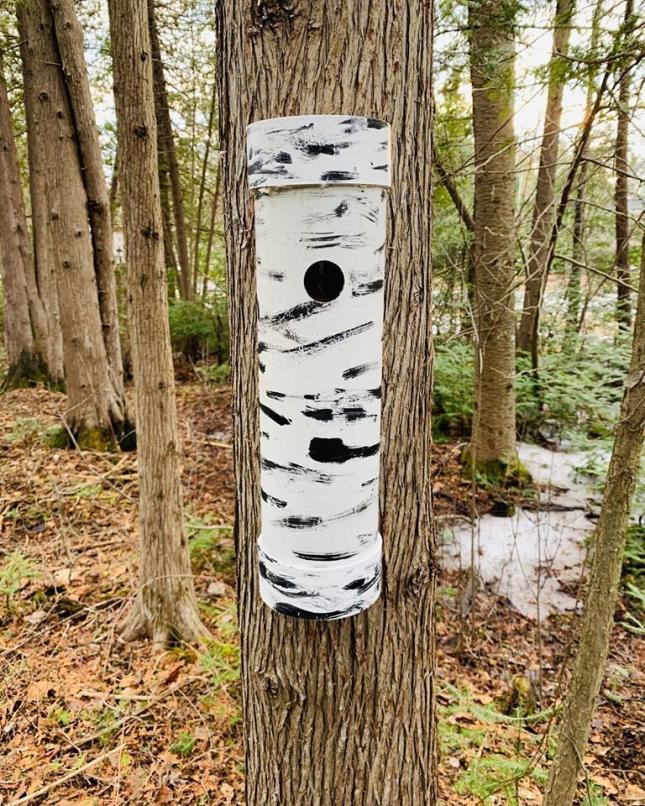
The early morning’s chorus is growing louder now as the birds repeatedly sing their beautiful songs to attract a mate and defend their territory. It is a sure sign that many of our resident birds are very busy with nesting preparations.
Nests provide a safe place for eggs and young birds to develop. Bird nests are extremely diverse, although each species typically has a characteristic nest style. Some birds do not make nests at all and instead lay their eggs in a simple scrape in the ground. Other birds construct nests from natural materials, such as grass, leaves, mud, lichen, and fur, or from human-made materials like paper, plastic, and yarn. Nests can be found almost anywhere – on the ground, in trees, in burrows, on the sides of cliffs, in and on human-made structures, etc. Females typically build nests, but sometimes both parents or just the male will build it.
Our most common backyard bird, the Black-Capped Chickadee, builds it's nest in human-constructed nest boxes, small natural cavities, or abandoned Downy Woodpecker cavities and they often excavate their own cavities.
Here are two great options for building your own Nesting Box for your backyard chickadees!
Build a Wood Nest Box
Build a Chickadee Nesting Tube (out of PVC pipe)
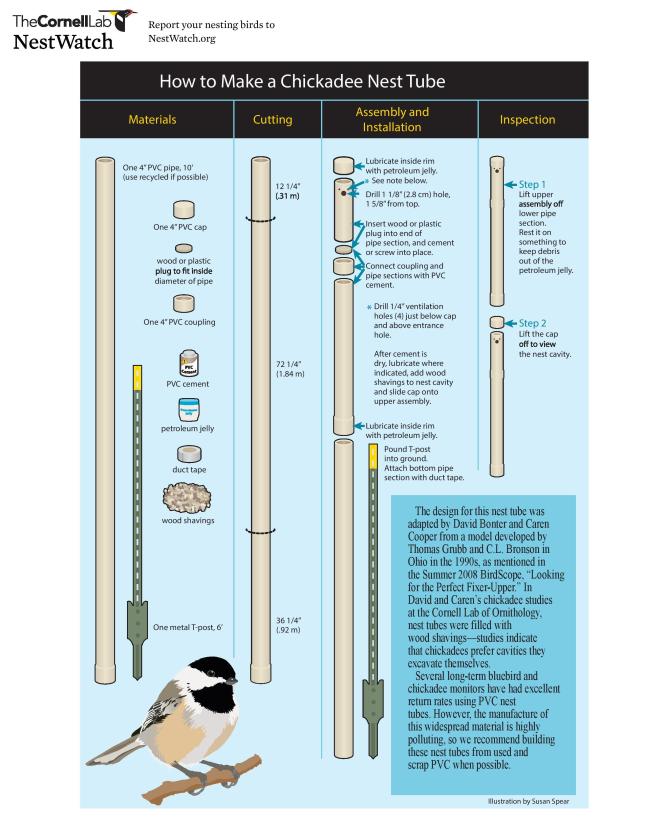
Here is another fantastic tutorial on how to build a PVC-tube Chickadee Nest Box
Check out NestWatch to learn more about how to make a safe, successful home for our feather friends.
MYTH: If you build it they will come.
Providing a nest box is a great way to attract nesting birds, but it is not a guarantee. Have patience - if you provide a box in the appropriate range and habitat for a cavity-nesting bird, the chances are good that eventually it will be occupied.
MYTH: One size fits all.
For cavity-nesting birds, one box size does not fit all. Purchase or build nest boxes with a target species in mind. Follow the specifications provided by the Cornell Lab of Ornithology when building your nest boxes.


